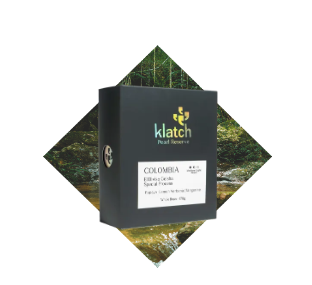
About this Coffee
This Special Experimental Process Geisha cupped in flavors of papaya, herbal lemon verbena and citrus tangerine, our latest Colombian Geisha coffee is from the Lasso Family, and will take you straight to the Bruselas, Pitalito Huila region of Colombia with just one sip. Enjoy this specially processed bean that really makes for a special cup of coffee. Genetics of this variety is where the potential is to enhance the sweetness through the process. This Anaerobic oxidation is slow and controlled; the fermentation that occurs avoids high temperatures. This helps the sweetness in the cup and is the reason why we refer to the process as semi – washed.
Finca El Diviso is located in the South Huila region, in Bruselas. It was founded by Jose Uribe Lasso. He works with his 3 sons Nestor, Adrian and Johnathan.
Together, they have been innovating in new processing methods to improve quality. The Lasso Family rigorously experiments with process, fermentation and different micro-organisms so create what they hope will be internationally renowned and totally unique cup profiles.
A farm with a privileged location, microclimate and biodiversity. Picking and sorting of cherries at optimum ripeness. This Special Experimental process involves Semi-Washed, Natural and Hydro-Honey processes. The Drying Process: “Casa Elba” – mechanical using dehydrators. Anaerobic fermentation in tanks at a temperature of 16-18°C for 40 hours, then an oxidation process in tanks for 20 hours. Pulping Approximately 15-20% of mucilage is left attached to the parchment. Oxidation in mucilage for 20 hours, must be added for a submerged fermentation for 12 hours with recirculation. To finish fermentation, a thermal shock wash is performed to remove part of the mucilage. The drying process is carried out in canopies for approximately 18-24 days.
History of Colombian Coffee
As with many coffee origins, it is believed that coffee was first brought to Colombia by priests, arriving, perhaps, within a decade or two after coffee first came to the Americas via the Caribbean in the first half of the 17th century. It was likely a garden crop grown for local consumption and barter for decades.
Generations of Colombians tell the story of a priest named Francisco Romero, who could be called the father of commercial coffee cultivation in Colombia. The folkloric tale goes that in the early 1800’s, Father Francisco, hearing confessions in the north eastern town of Salazar de la Palmas, assigned planting coffee to his parishioners as penance for their sins. The Archbishop of Colombia heard about this and ordered all priests to adopt the practice. Commercial production of coffee expanded quickly, moving into regions where the growing conditions were ideal.
Growing Coffee in Colombia
Even though it’s been 4,000 years, the soil resulting from the last major eruption of Tolima is still considered “young soil,” filled with nutrients that are no longer found at the same levels in old soil. Volcanic soil contains high levels of potassium and nitrogen, which are fading or absent in other soils. “Boron”, which arrived from outer space long ago, is also present. Boron plays a key role in a diverse range of plant functions: it is essential to the structure of plant cell walls and in the creation of enzymes, and in flowering and fruit formation, meaning that Boron contributes to coffee seed yield.
In addition to nutrients, the structure of volcanic soil is also beneficial to coffee growing. It can soak up and hold moisture while, at the same time, facilitating good drainage so that the water doesn’t pool, which is not good for coffee plant roots. Coffee plants like to take a drink, then take a break. Additionally, volcanic soils are usually found on an incline, which also helps with drainage. All of these “microclimate” factors come together to bring you the complex, nuanced flavors in your cup of coffee.